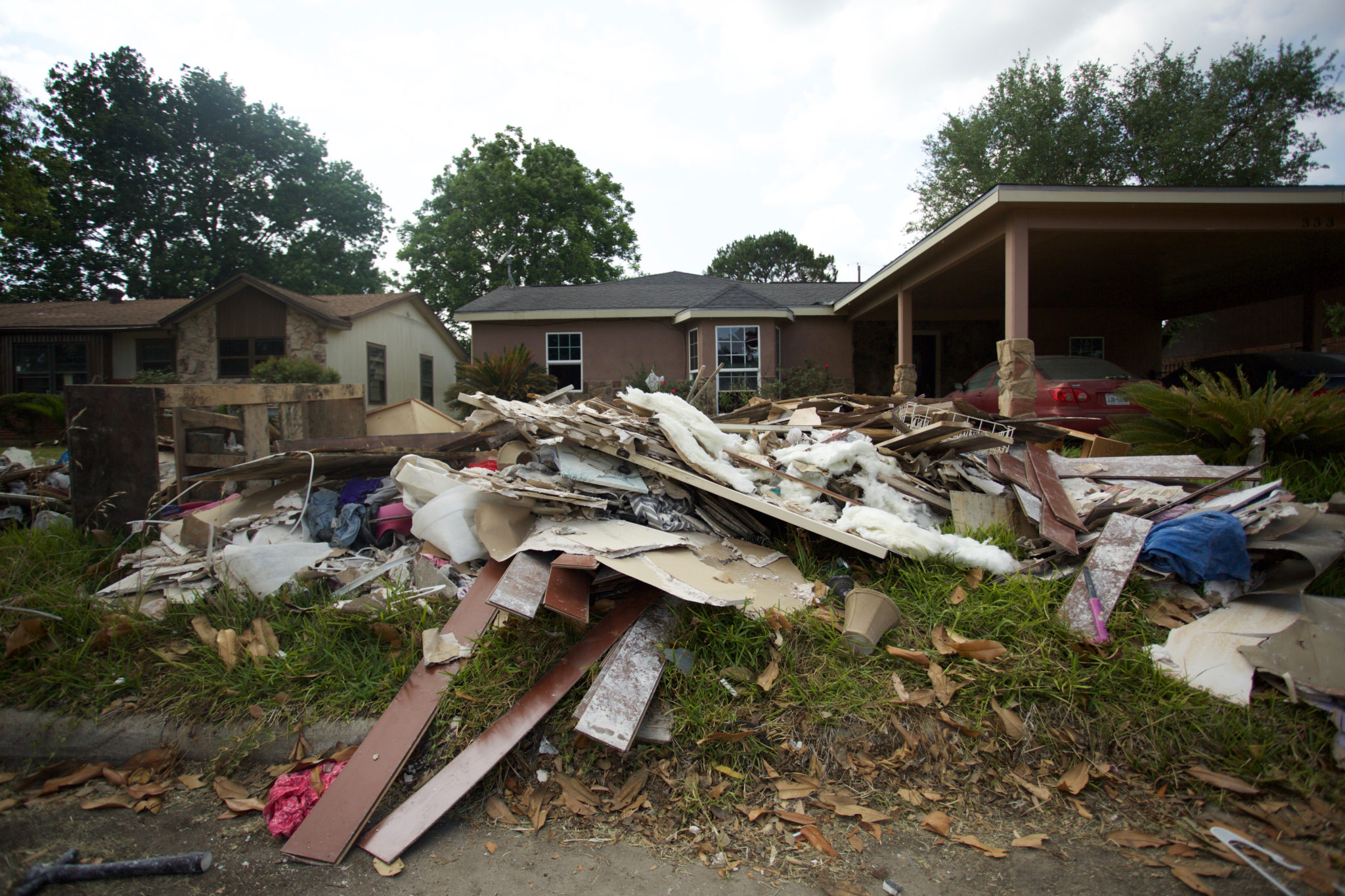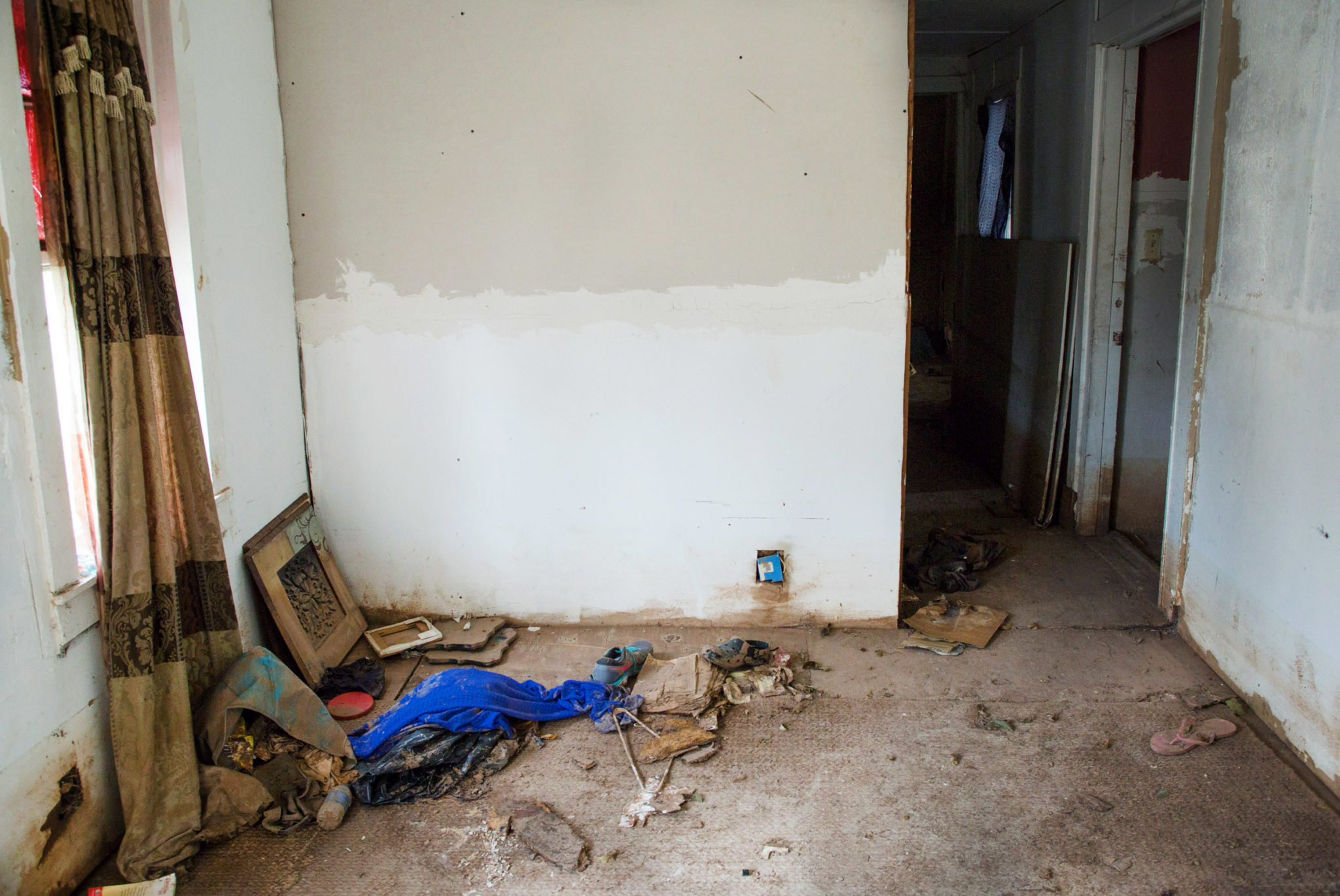Two years ago, Hurricane Harvey made landfall in Southeast Texas, eventually parking over the Houston area, where it dumped an historic 60 inches of rain. The Category 4 storm became the second-costliest hurricane in U.S. history, tucked only behind Hurricane Katrina in 2005. And just like with that notorious storm, disaster relief for Harvey is slow going.
It took nearly a full year before any of the $4 billion dollars that Congress initially allocated post-Harvey was really available, says Maddie Sloan, the director of disaster recovery and fair housing for Texas Appleseed, an Austin-based nonprofit that advocates for the poor. Of the 4,500 Houston-area households that applied to the city-administered (but state and federally funded) Homeowner Assistance Program, fewer than two dozen applicants have been approved; only four checks totaling $200,000 have been paid out. (Officials from the city’s Housing and Community Development Office were unavailable for comment.)
Among those still waiting, luckier homeowners—if you can call them that—were able to repair or rebuild using their own savings, insurance, or loans.“If you have money, if you have insurance—if you have the resources to fight your insurance company to get as much as you are entitled to—you are hopefully living in a new or repaired home,” said Sloan. “But for people without other resources, [disaster relief money] is the only housing repair money out there.”

Residents of Southeast Texas who were hit by the storm have often been left to fend for themselves until the money started to trickle in.
“There are still people living in homes with mold,” said John Henneberger, the co-director of Texas Housers, a fair housing advocacy organization. “There are people living in houses where the sheetrock has been partially taken off the walls—living in a house of two-by-fours.”
Renters typically have even less control over their lives after a hurricane, given that tenants’ rights laws in Texas are fairly weak. According to Nelson Mock, an attorney with Texas RioGrande Legal Aid, tenants can argue for a reduction in rent if a landlord still hasn’t fixed damages from an event like Harvey. But more and more new leases now require tenants to waive that right.
Nearly a quarter of Houston’s public housing, managed by the city’s housing authority, was flooded or damaged during Harvey, shrinking the city’s already limited supply of affordable housing. Today, 402 units are still “offline,” said Tory Gunsolley, president of the Houston Housing Authority.
The city is struggling to come up with the money to fix those units. The agency has to fully pay for the needed repairs and then wait to be reimbursed through the Federal Emergency Management Agency. And additional funds from the U.S. Department of Housing and Urban Development (HUD) haven’t even come in, says Gunsolley. It might take six years for the HUD money to be fully distributed.
The sluggish pace of recovery and slow trickle of federal dollars is certainly frustrating for residents and local officials—but it isn’t anything new. The Houston Chronicle reported in January that some federal aid dollars from Hurricane Ike, which hit the region 11 years ago, still haven’t been completely disbursed. The last leg of infrastructure and housing developments is expected to finally wrap up this year. In Galveston, the city tore down more than 500 public housing units that were severely damaged in the aftermath of Ike. A decade later, in September of 2018, fewer than half those units had been rebuilt.

“We do Groundhog Day with disaster recovery all the time,” Hennenberger said. The same issues always seem to crop up: Money isn’t allocated to where it’s most needed; racial and economic disparities aren’t addressed as funding finally rolls out; progress reports and updated timelines from the state are frustratingly slow. The byzantine process of allocating FEMA funding, distributing it to local entities, and finally greenlighting projects continues to drag on.
One of the major federal laws that dictates disaster relief, the Stafford Act, was passed in the 1980s when disasters felt “rare and random,” says Ali Mostafavi, a professor of civil engineering at Texas A&M. Today, as climate change intensifies hurricanes, flooding, and wildfires, and as cities expand into more dangerous terrain, the scale and scope of these disasters is larger than ever before. It might take a decade for Hurricane Harvey funds to be completely spent. How many disasters will strike before then?
Read more from the Observer:
-
Floodplain Maps Are Outdated. This Scientist Wants to Change That: More than half of FEMA’s flood maps rely on decades-old data. Now, a group of Texas researchers is tackling the problem with a $3 million grant and crowdsourced data.
-
Could Trump’s Reelection Campaign Turn the Texas House Blue? A number of high-profile GOP electeds are throwing in the towel in advance of the 2020 election cycle—with more expected in the coming year.
-
More Highways, More Problems: Highway expansion is the Lone Star State’s status-quo solution to easing traffic—but it actually leads to more congestion and displaced communities.







